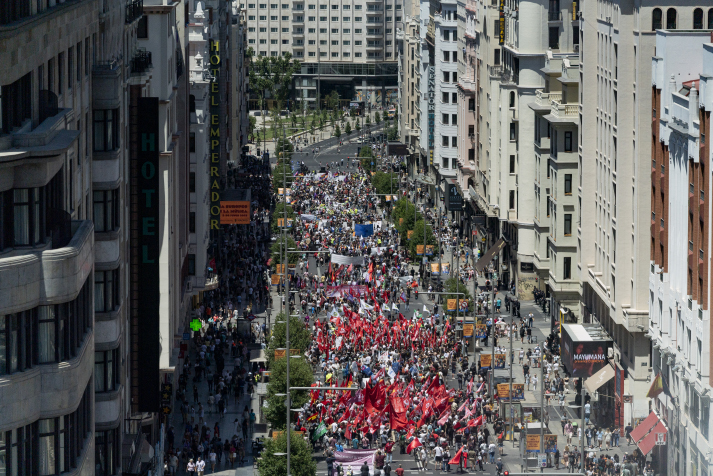
Leaders of the NATO member states, joined by several special guests, gathered in Spain for the military bloc’s summit from June 29 to 30. And make no mistake: a peaceful and shared future was not the main theme in Madrid.
The Western media narrative suggests the highlight of the event was NATO’s formal invitation to Sweden and Finland to join the alliance; NATO leaders insisted these additions were necessary because Russia continues to demonstrate a belligerent attitude toward Europe. In fact, hours before the meetings officially began, NATO Secretary General Jens Stoltenberg had announced 300,000 NATO troops would be placed at high-readiness over the next year, up from 40,000 previously, a new military lineup designed to better counter Russia, the country the alliance has designated as posing the greatest threat.
President Joe Biden contributed to the “one-cannot-trust-Russia” theme by announcing the U.S. would soon send another $800 million in weapons to Ukraine, a move that will extend a tragic war now in its fifth month. When asked about the war, he offered a head-scratching answer, saying, “I don’t know how it’s going to end, but it will not end with Russia defeating Ukraine. Ukraine has already dealt a severe blow to Russia.”
What?
The United Kingdom was also banging the war drum. Secretary of State for Defense Ben Wallace added NATO must consider whether to demand additional money from its partner nations in the near future. “As the threat changes, so must the funding,” he said.
All the while, inflationary pressures throughout the West mean more and more people are struggling to pay their bills, put food on the table, send their kids to college and fill up their gas tanks. Justifiably, more and more Americans and Europeans are asking why they must suffer because of a war that seems to have no direct relevance to their countries and that lacks a clear endgame.
Nevertheless, the White House chooses to send more arms to Ukraine, ensuring an even longer war that will cause even more damage to Ukraine, extend the humanitarian crisis there and irritate already higher prices for basic goods and services throughout the world.
And make no mistake, for roughly 30 years, NATO officials insisted that inching ever closer to Russia was necessary in order to ensure peace. They deliberately ignored warnings from important international figures and Russian politicians that Russia felt threatened by the expansion and at some point would respond. The Russia-Ukraine conflict—brought about in part because the West continued to entertain the idea that Ukraine could join NATO—has provided the perfect we-told-you-so moment for the West. In a convenient twist of logic, they assert it’s all Russia’s fault for getting angry because it was consistently irritated [by the West].
At the same time, we must not forget Western leaders will tell you that Russia is not the only country they will not trust. China, too, is not in NATO’s good graces.
NATO’s Strategic Concept, released during the summit, alleges that China poses “systemic challenges.”
In fact, the alliance might have its eyes set on expanding into Asia. The ripple effect of NATO’s potential ambition: The leaders of Australia, Japan, New Zealand and the Republic of Korea attended the summit for the first time. Chinese officials have now sounded the alarm: Any NATO move into Asia will jeopardize peace in the region and the world.
So will NATO listen and stay out of Asia? Recent history suggests the answer here is quite obvious: Not a chance.




